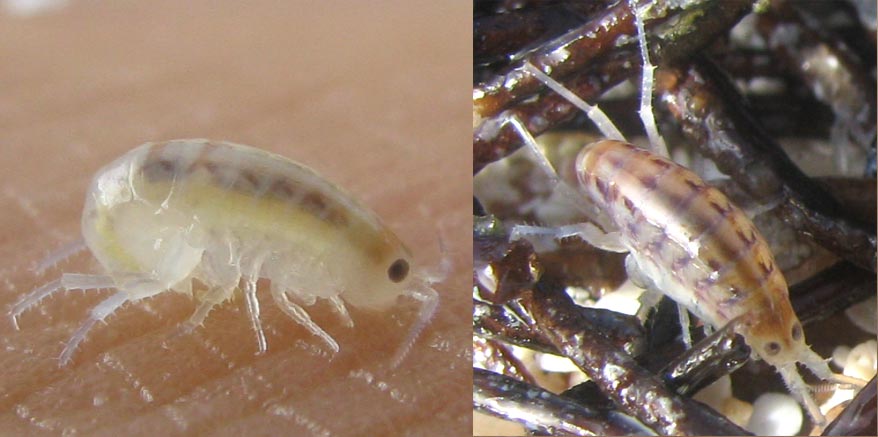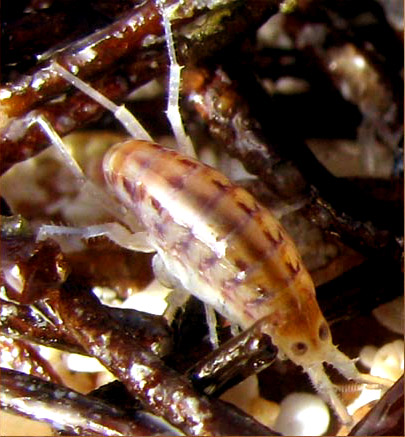Excerpts from Jim Conrad's
Naturalist Newsletter
from the June 12, 2011 Newsletter issued from written at Mayan Beach Garden Inn 20 kms north of Mahahual; Caribbean coastal beach and mangroves, ~N18.89°, ~W87.64°; Quintana Roo state, MÉXICO
 SAND FLEAS
SAND FLEAS
I have a favorite place up the beach where each morning I like to sit in the sand, lean against a tree trunk left by the last storm, dig my heels into the sand, and watch the early morning sun work its way up through clouds out over the water. The other day the tide was as high as it gets, so breaking waves wetted the sand and tossed-up Shoalgrass at my feet. It wasn't long before I realized that all over my feet and legs something very small was gnawing on me.

The skin on my feet and legs was heavily dusted with what looked like multitudes of cream-colored lice -- tiny creatures with softish-looking bodies with white legs, and black, pinprick eyes.
I started to nudge one with a finger but before my finger reached him he disappeared. Others did the same thing. They were JUMPING so quickly that my eyes and brain couldn't register their movement. In fact, now that I looked, when I waved my foot over the sand, thousands of these pale little beings sprang up like cooking popcorn.
In the pictures you can see one gnawing on my skin, and another, about 1/6th of an inch long (4mm), grazing in wet Shoalgrass.
At first I thought that they were springtails, a kind of wingless insect I'd encountered in a similar shoreline habitat among washed-up vegetation back in Kentucky, and in this Newsletter I wrote that. However, Daniel Hockenberry somewhere in Cyberspace wrote, correcting me that they were sand shrimp, better known as sand fleas.
Daniel said that springtails don't bite, but rather feed on fungus and decaying matter, while sand fleas do bite. Springtails, instead of having regular tails, have a fork-shaped device under their abdominal areas they use to jump, while sand fleas have a shrimp-like tail they flick downward when they jump. An even greater distinction is that springtails are insects, while sand fleas are crustacean, like shrimp, to which they're similar.
On the Interent I find two aquatic crustacean genera, both with numerous species, known commonly as sand fleas. I can't hope to identify them to species, genus or even family level. This is one instance when an abundant species goes unknown here except for its much-inclusive common name, which is sand flea.